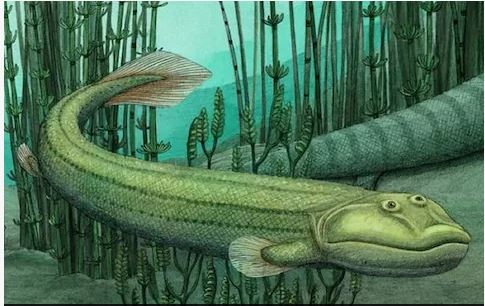About 365 million years ago, a group of fish left the water and moved towards the land. Thousands of species were found in these tetrapods, including amphibians, birds, lizards and even mammals. That is, we humans are also descendants. In the analysis of fossils, experts have found that creatures that first came to live on Earth from the ocean went back to live in the ocean. This research can prove to be important information about the environment of life on Earth, about 360 million years ago, about the process of coming to Earth from water.
Researchers have found from the study of this fossil that at least one fish that used a lot of its minnows, which after coming to Earth, realized that its minnows were better for swimming. In an article published in Conversation, Thomas Stewart, assistant professor of biology at Penn State, tells the story of his investigation.
Stewart, along with Justin Lamborg in March 2022, found this fossil in the Canadian Arctic in 2004, which was hidden in a rock when his jaw was clearly visible. It was known from the visible signs of the shape of the body that it would be an early tetrapod organism.
Later, when researchers did a CT scan of this stone, they found that a complete peacock feather is hidden in this fossil. But before he could study in detail, he could not study further due to the Covid lockdown. This type of Meenpankh is very important because a wealth of information is hidden in it.
Meenpankh may explain how tetrapods evolved. How did they live millions of years ago? For example, on the basis of the size of some bone structure, it can also be known whether these animals swam or even walked on land. Researchers did not get much information from earlier CT scans.
After the lockdown, the researchers cut some part of the stone so that they could get better information about this Meenpankh. After this, after analyzing the data, the researchers came to know that they had discovered a new species of creature, which was our closest related to hand-legged vertebrates.
Researchers have named this organism Qikiqtania wakei. When this fish was alive millions of years ago, there usd to be river drains in the warm environment of that time and it was an organism living inside the water. These sensory tubes used to recognize the flow of the surrounding water. The shape of this predatory creature used to be very strange.
The researchers found that Qikiqtania’s minnows were somewhat different than other contemporary tetrapods, which may not have helped them to walk on land, and therefore must have returned to the water and remained ashore. Yet this discovery has told so much that how much diversity was maintained in that era.




Comments are closed.